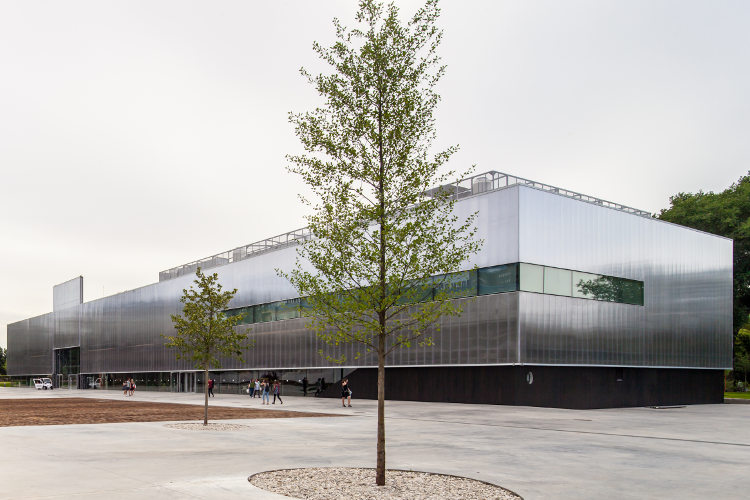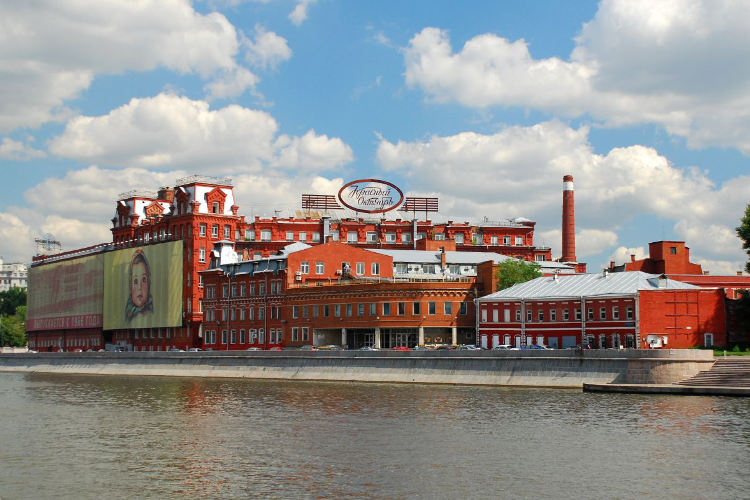
In 2014, Christie’s sold over £45 million of Russian art. That same year, Valentin Serov’s Portrait of Maria Zetlin was sold for £9.3 million – the highest price ever paid for a Russian painting. In recent years both Sotheby’s and Christie’s have made record-breaking sales of Russian paintings, a market which has grown considerably over the past decade.
It is mostly private collectors who have blown up the ballooning market – so-called 'New Russians' with deep pockets and patriotic tastes. Indeed, the free-spending habits of the newly rich are stimulating a cultural revolution in Russia. While the greatest demand is reserved for 20th-century avant-garde artists, contemporary creatives are also benefitting.
The most famous private collector is supermodel Dasha Zhukova, who opened the Garage Museum of Contemporary Art in an old bus depot (thus the name). The art museum has since moved to spectacular new digs in Gorky Park – a derelict Soviet-era building renovated by the visionary architect Rem Koolhaas. But the original name stuck. And Dasha’s Garage is still one of the hottest modern art venues in the city. It hosts exhibitions, lectures, films and many interactive educational programs, featuring both Russian and international artists.
The institution is unique in its efforts to compile an archive of Russian art and related documents, so that this creative period is properly recorded. Garage is also one of the main players in organising and hosting the Moscow Biennale (6th.moscowbiennale.ru/en), an important cultural event which brings together artists, critics and curators from around the world.
Garage has received a huge amount of international attention, thanks to its famous patron and her billionaire boyfriend Roman Abramovich. But it is only one of many venues that have fuelled Moscow’s art explosion.

Back in the day, art often promoted industry, as Socialist Realist paintings and sculpture celebrated the achievements of socialism. Now, the canvas has been turned upside-down. Idle factories and vacant warehouses are being converted into art studios and gallery space, so industry (or the remains thereof) is promoting art.
The venue that started this trend – when it opened way back in 2007 – is a former wine-bottling factory known as Winzavod. Located in the gritty streets behind Kursk Station, Winzavod’s buildings still have names like 'Fermentation Workshop', but now they contain art galleries, studio space, fashion boutiques and other funky shops. Winzavod is home to several of the capital’s most prestigious art galleries, such as Cultural Alliance (formerly Guelman Gallery; www.guelman.ru), as well as exhibit space devoted to Sots Art (nonconformist Soviet art), photography and more. After you browse the art, you can observe the artists in their element at the on-site Tsurtsum Cafe, where they gather to sit on the veranda and plot startups, performances and revolutions.
Following suit, a nearby Manometer factory has been transformed into ArtPlay, a design centre that houses furniture showrooms, antique shops and architectural firms. Considering the architectural emphasis, there is perhaps less for the casual caller to see. But there are usually diverse rotating exhibitions in the various display spaces, not to mention the excellent (and artistic) menu at the on-site restaurant, Art Clumba.
Just north of here, Arma Factory (armazavod.ru) is a former natural gas factory. Reconstruction is ongoing, but the first venues to move in are all creative outlets: underground clubs, innovative restaurants and cutting-edge theatre groups.
Meanwhile, the experiment in industry-to-artistry that’s getting the most attention is Red October, a former chocolate factory on the bank of the Moscow River, just opposite the Kremlin. This island of Russian modernity and flare is a vibrant arts centre as well as Moscow’s hottest nightspot. The flagship venue is the Strelka Institute for Architecture, Media & Design. Aside from the course offerings and the popular Bar Strelka, the institute brings a healthy dose of contemporary culture to Moscow, hosting lectures, workshops, film screenings and concerts. Within the walls of the factory, there are high-profile galleries such as Lumiere Brothers Photography Centre and Red October Gallery (redoctobergallery.com), as well as countless restaurants, bars and hot-to-trot nightclubs.